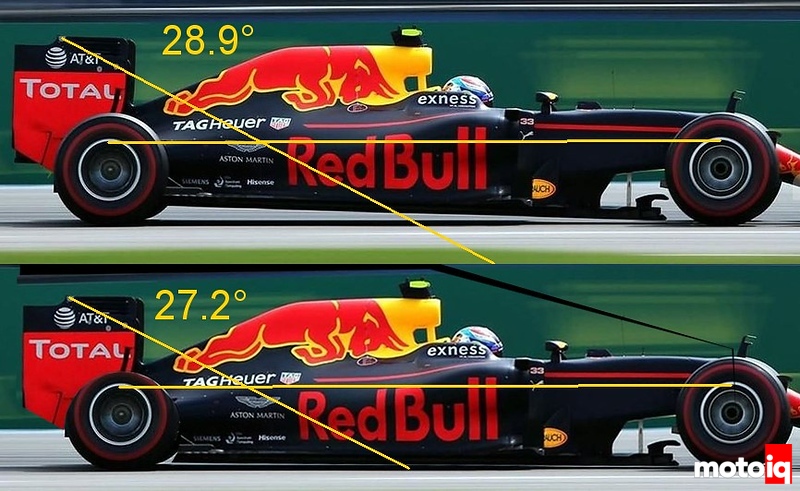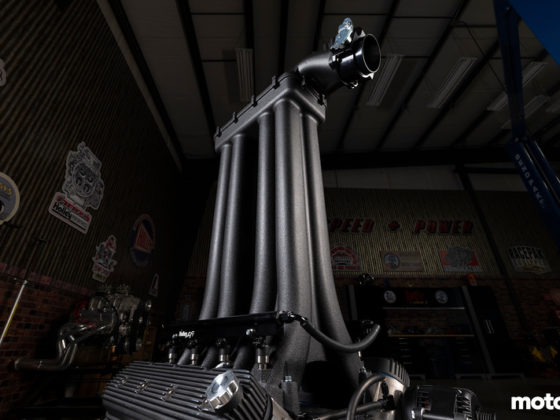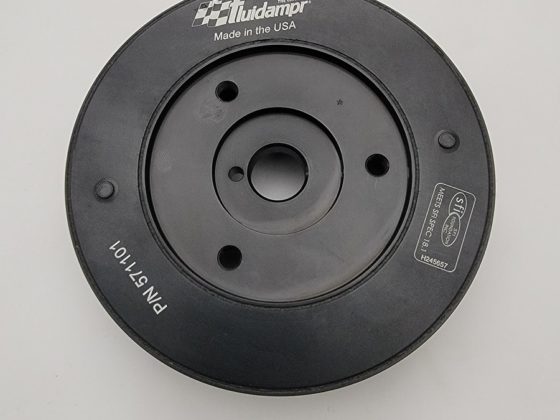Kids, please try this at home.
You can replicate this in the kitchen sink; all you need is water flowing down the vertical side of the basin. Place a spoon just into the flow with a light touch. The flowing water will create a low pressure between the spoon and the wall drawing the spoon closer until the flow chokes and the spoon is then pushed away by the convergence. If you hold it just right, you’ll get a tapping oscillation with the spoon hitting the flow repeatedly.
Enter the era of Group C.

The Lola 810 wind tunnel model with early-F1 style underwings, this car was the starting point of Yoshi Suzuka’s efforts for the Nissan GTP

This early prototype imitated the simple “underwing” concept and eventually evolved into the shape of Suzuka’s Nissan P35 in the early 1990s. This along with many aerodynamic improvements took thousands of wind tunnel tests. The downforce generated was elevated to the stuff of legend. The complexity of flows involved in F1 has grown ever more intricate.
As you can see below, the modern Formula car tunnel is closer to a “Venturi” type, unlike those early ‘wing style’ F1 side pods.

2022 F1’s simplified concept car; a tunnel shape with a throat, nozzle, and diffuser. The plank in the center between the tunnels. ref: the-race.com
F1 aerodynamicists are not the first to experience this phenomenon through F1 attracts so much more attention as early testing is very public. We have supported prototype and even Time Attack customers with similar issues through to resolution. It is definitely not uncommon, in most categories it can be avoided through the careful use of CFD and wind tunnel testing. Admittedly it is a far more difficult problem in F1 given the complexities of vehicle forms and the performance margins sought. This said, given the number of skilled people and the quality of tools available I am confident the problem will be solved quickly. We may even see evolving solutions over the course of the season and clean slate solutions next year.
All things seek equilibrium.
On any car with aerodynamic downforce applied to a suspended mass (the tire’s spring rate also being a form of suspension), the car will always find a state of equilibrium; the ride height will compress until springs support the aerodynamic forces. As speed increases, so does downforce – the ride height will decrease increasing downforce again. Porpoising is bouncing or oscillation in front, rear, or both caused by a loss in downforce at some ride height resulting in downforce being lost. Once downforce is lost the suspension springs then return the car to a higher ride height, however in this position the flow field again generates additional downforce and restarts the cycle. Rear porpoising is what you have seen on the Formula One cars this year, but front-only oscillations can happen too. The term ‘porpoising’ came from the early designs where the front wing was extremely sensitive to pitch change; an appropriate change in rear ride height caused front downforce to increase subsequent to the rear rising. This back-to-front bouncing resembled a dolphin coming out of the water nose-up and dipping back under with the nose down over and over.
Downforce isn’t a number, it’s a map.
The real cause of porpoising is better described as what aerodynamicists term a ‘sensitivity’. There are lots of sensitivities and in this case, the relevant one is ride height, being the distance from an arbitrary point on the car to a point on the ground. One of the most basic tools we use is called an aero map, a graph visualizing an aerodynamic behavior of a car. It is a simple 3D graph to visualize the behavior of a car, in this case, ride and pitch sensitivities. The bottom axes are front and rear ride heights. For MotoIQ readers you might visualize this like a fuel map in your ECU where engine RPM is plotted against manifold pressure or volumetric efficiency used to create a three-dimensional graph of the fuel delivery requirement.

An aero map for front lift coefficient of a GT car.




13 comments
Brilliant article and interesting insight. Thank you for writing this!
His name isn’t Brilliant for nothing!
Name is one thing, his deeds and expertise are quite another 🙂
The other key issue was from a regulation standpoint. This case is not something that could be tested in the wind tunnel due to a regulatory speed limit for wind tunnel measurements.
Quote from Mattia Binotto: “Honestly, such behavior is normal with this type of car. And it cannot be simulated in the wind tunnel because it occurs at 250-270kph and the regulations limit the wind tunnel speed to 180kph.”
This therefore leaves only the CFD simulation and physical track testing paths for determining whether this issue exists, and gathering the data necessary to understand it.
The article touched on the regulation of wind tunnel speed and scale though maybe did not explain what was to do with the regulations.
Great article. Thank you for taking the time to write it for us.
Pretty certain that the current problems with porpoising has more to do with the ban on inerters for 2022. That coupled with the switch to 18” wheels (stiffer sidewalls increasing suspension frequency) probably has had an extra hand in exacerbating the issue.
“Unofficial proposals were flying around the paddock at Barcelona testing about introducing active suspension and the return of hydraulicly managed suspension and inerters, which dampen out certain frequency moments in suspension to fix porpoising. Formula 1 banned hydraulicly managed suspension and inerters in favour of traditional springs and dampers for 2022. These were highlighted as easy fixes to solve the porpoising issues if the FIA would allow this technology to return to the cars.”
https://www.racecar-engineering.com/articles/formula-1s-porpoising-problem/
That’s more like a cure for the problem, the cause of the problem is covered by Andrew here.
I guess that you didn’t read the linked article. I don’t believe that Andrew actually understands why this issue suddenly became a problem across all cars in 2022. Therefore, Andrew is talking about an aero solution to a mechanical problem, which *might* be possible, but is not a good method of problem solving.
“Porpoising is an issue on most 2022 #F1 cars.
Red Bull have found their solution in a very clever & legal suspension innovation. So they can now run super close to the track. With gas springs and inerters banned, they’ve exploited a non-newtonian fluid filled damper.”
https://mobile.twitter.com/ScarbsTech/status/1509809156521443341
He is talking about an aero problem and to me it’s pretty obvious that it is. I sort of think that careful tuning of the damper’s high-speed circuits would probably work better than non-Newtonian fluid which would work only in a narrow range.
Joe, you should note that at the end of Scarbs’ Twitter thread, he used #April1, and also he’s quoted the suspension engineer as calling the technology something that would shorten to an acronym of PIE, while making repeated references to custard.
I think you’ve missed the joke there…
Hahaha, the joke is way at the bottom of the thread!
Ground effect wasn’t discovered by accident, Peter Wright had been working on airfoil shaped side pods since the late 1960’s and designed a car for March with wing shaped side fuel tanks a few years later before joining Lotus.